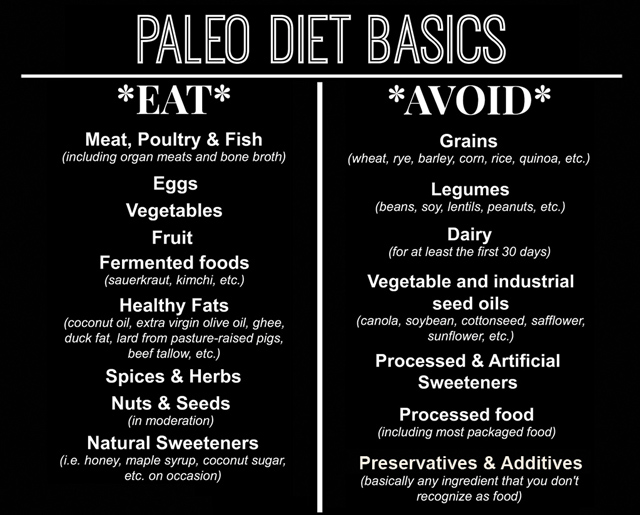Innovation doesn’t always mean improvement, advocates of the Paleo Diet might say, as America’s newest and most “Googled” diet of 2013 is, ironically, inspired by the world’s oldest diet.
By Sami Kawahara
The Paleolithic diet, commonly referred to as the “caveman,” or “hunter-gatherer diet,” is based on the foods that our ancestors ate during the Paleolithic Era—a period that began about 2 million years ago, and ended with the First Agricultural Revolution, 10,000 years ago. The main principal of the diet is simple: if the cavemen didn’t eat it back then, we shouldn’t eat it now.
During the Paleolithic Era, our ancestors only ate foods that could be hunted and fished, such as meats and seafood, as well as foods that could be gathered, such as nuts, fruits, vegetables, herbs, and spices. Since the time when humans began cultivating crops around 10,000 BCE, several kinds of food that humans rarely consumed before—beans, grains, alcohol, and dairy products—became staples of the human diet. Since the Industrial Revolution in the 19th century, food processing techniques and intensive livestock farming methods have led to the production of refined cereals, sugars and vegetable oils.
Due to strong beliefs that the human digestive system has hardly changed over time, Paleo Diet supporters argue that the ideal diet for human health is a pre-agricultural diet. So, say goodbye to ramen and rice—no grains, no refined sugar, no processed foods—and hello to sashimi and yakitori.

Courtesy of rubiesandradishes.com
Cutting out particular foods, however, doesn’t mean your diet has to be a strict calorie-counting, yes-or-no-checklist type of diet. The Paleo Diet focuses more on a general lifestyle change and guidelines to eating unprocessed food. Sayaka Miller, longtime ultra-trail athlete and author of Japan’s bilingual Paleo blog, Munchkin Foods, says that “Japanese people are not used to thinking of a diet as a lifestyle. They are always looking to go on a diet, but it’s more of a momentary thing to drop weight in a couple weeks. They can’t wait to finish their diet so they can eat a piece of cake after.”
The Paleo Diet, on the other hand, puts more of an emphasis on a change in mindset: it’s actually less of a diet and more of a lifestyle. Advocates believe that just following the minimal requirements—cutting out processed foods and loading up on unprocessed whole foods, in combination with healthy sleep and physical activity—can lead to a lean, strong, and energetic body.
Miller adds that unlike diets that require you to measure out food and count calories, Paleo is comparatively quite simple. “Trips to the supermarket and preparing meals are easier because you can skip the middle aisles and head straight to the fresh part of the market.” It is also easier because it’s up to you to find the right way of doing it yourself. “You know how hard you work out [and] how many calories you need and you adjust [your calorie intake] to your own lifestyle,” Miller says. Some long-time practitioners of the Paleo Diet have even noticed improvements in chronic illnesses, thanks to cutting out milk and grains, such as corn, wheat, pasta, and rice, from their diets.
For Japanese people or people living in Japan, cutting out the ever-present staples of rice and noodles isn’t easy. But when cooking at home, there are a number of Paleo-friendly alternatives that can replace ingredients in traditional recipes. Although ordering gyoza or chocolate chip cookies out at a restaurant might not be considered Paleo, you can surprisingly make these indulgent-sounding dishes healthy (see sidebar).
Miller recommends replacing white flour with almond flour when baking or cooking tempura, or substituting canola oil with olive, coconut, avocado, macadamia, walnut or flaxseed oil. While out at an izakaya, most veggie and grilled fish dishes are Paleo-friendly, Miller says, and so are miso, green tea, edamame, and wakame.
Like any new healthy habit, starting out isn’t easy, but the results can really be worth the effort. “The first few months are hard,” Miller reflects. “But once you eliminate foods, the cravings just gradually go away and you really feel the impact it has on your body.”
Paleo Recipe Book
Chicken Gyoza
Ingredients:
9–12 sasami (chicken tenders),
250g ground pork,
1 package shiso leaves,
1/2 package nira,
1 tbsp sesame oil,
1/2 tsp ginger,
1/2 tsp Chinese 5 spice,
Salt/pepper,
1 tbsp coconut oil.
1. Dice shiso and nira very finely. Mix sesame oil, shiso, nira, ginger, Chinese 5 spice and ground pork for filling, salt and pepper to taste.
2. With skin side up pound sasami with meat tenderizer or hammer until thin. Be careful not to rip holes in the meat.
3. Spoon 1tsp of filling or more depending on size of the sasami and wrap. These will not close as well as traditional gyoza so be careful that there is some space for the chicken to press together to hold in the filling. Salt and pepper the tops of the gyoza
4. Heat 1 tbsp coconut oil in a frying pan. Add gyoza and cook on medium heat until under side is white. Flip and cover—cook for another 5 minutes then uncover and cook on high heat for 5 minutes to crisp the underside.
5. Serve with coconut aminos, apple vinegar with a dash of red pepper for dipping sauce.
Chocolate Chip Cookies
Ingredients: Almond flour 1 1/2 Cup, Baking soda 1/4 tsp, Salt 1/4 tsp, Coconut oil 2 tbsp or Butter 28g, Vanilla extract 1/2 tsp, 1 Egg, Honey 70g, Chocolate Chips 1/2 cup
1. In one bowl, mix together the dry ingredients—almond flour, baking soda, and salt.
2. In a separate bowl, mix the wet ingredients except for the coconut oil or butter —i.e., the vanilla, egg, and honey.
3. Mix the wet ingredients into the dry, and stir in the coconut oil or butter. Fold in the chocolate chips last.
4. Let the dough rest in the fridge or freezer for about 30 minutes. Preheat the oven to 170 degrees.
5. Use a tablespoon to scoop up the dough, form a ball, and place it on a baking sheet.
6. Bake in the oven for 6 minutes. Take the oven tray out once, and use a spatula to flatten the cookie.
7. Return to the oven and cook for another 5–7 minutes. Take the cookies out of the oven when they start to turn golden brown. Watch them carefully in the last 2–3 minutes as almond flour can burn easily.
8. Cool on a wire rack.
Recipes courtesy of munchkin-foods.com









